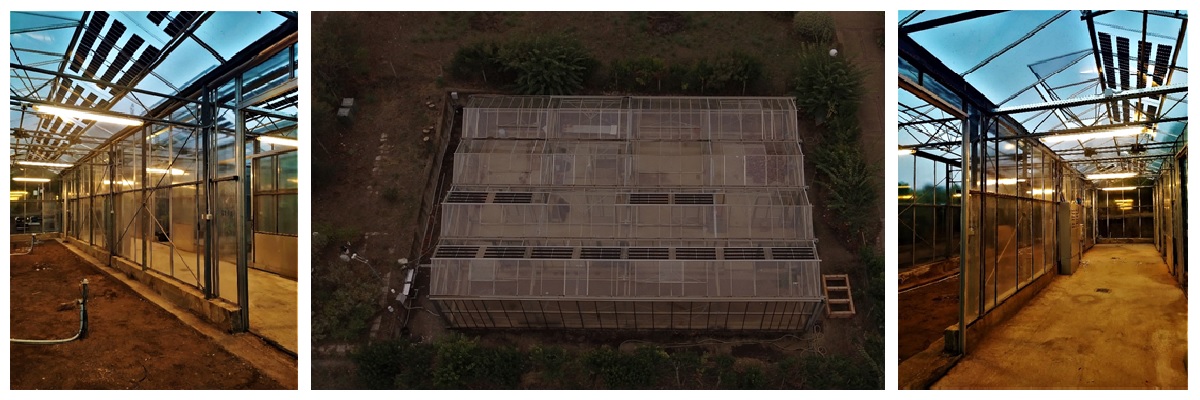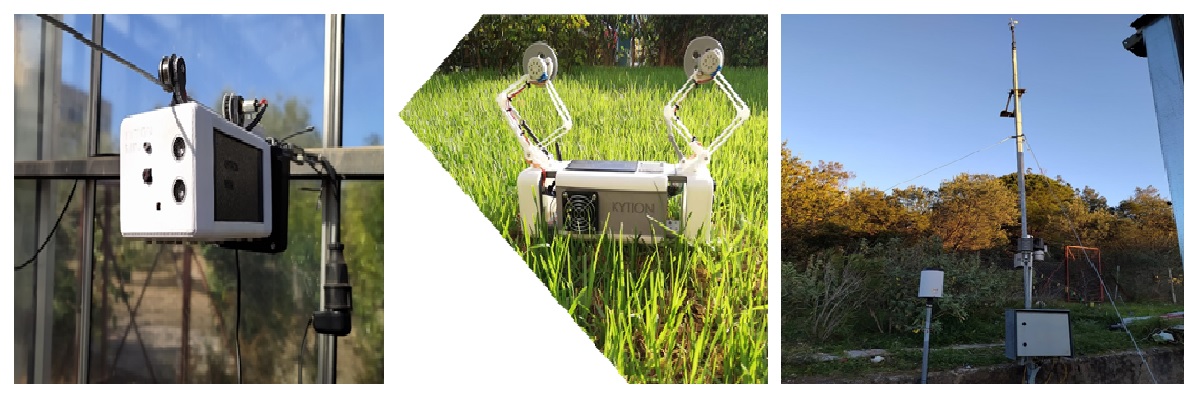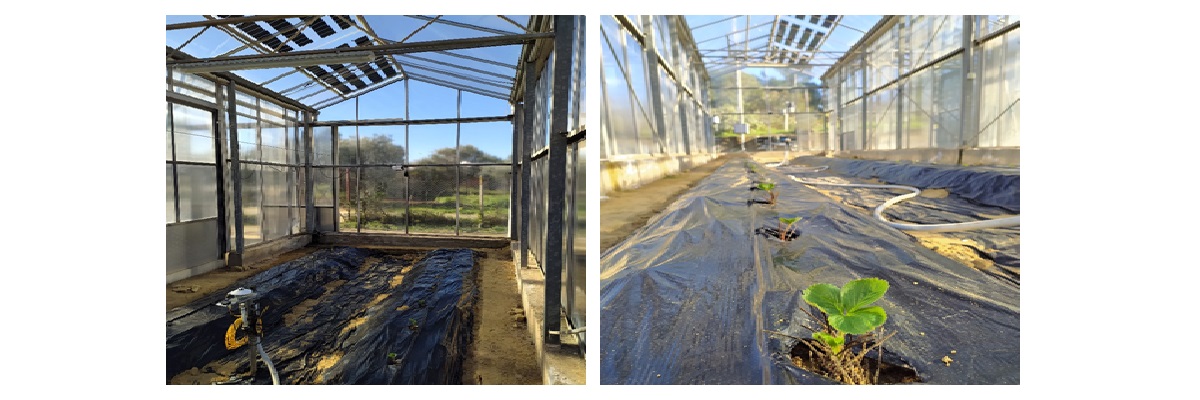Laboratory Manager: Angeliki Kavga, Asst. Teacher
Email:
Tel.: 26310 58215
In the Laboratory of Agricultural and Greenhouse Constructions, student education and research focus on Greenhouse Constructions, Renewable Energy Sources (RES) in the Agricultural sector, Precision Agriculture, and Smart Agriculture, considering that we are amid the era of Agriculture 4.0 – The Future of Farming Technology.
Education/Research
More specifically, the education/research concerns:
- Enhancing the structural integrity and thermal efficiency of greenhouses for energy usage optimization.
- Implementing Infrared Radiation (IR) for heating the greenhouse environment and agricultural structures.
- Installing Integrated Photovoltaic Systems (GIPV) on greenhouse rooftops.
- Managing microclimatic conditions within greenhouses through sensor networks and automated systems.
- Utilizing Automatic Control Systems, cutting-edge Information and Communications Technology (ICT), and Process Regulation for efficient greenhouse operation.
- Deploying integrated robotic management systems for greenhouse units (cablebots – agbots), leveraging IoT technologies for enhanced performance.”

Application examples of the aforementioned technologies.
Throughout the academic year 2021-2022, the University of Patras initiated a project aimed at developing innovative technologies, that can unite students in two crucial areas: the primary sector, which stands as a cornerstone of the Greek economy, and green energy, which serves as a vital and sustainable solution to the energy challenges of our era.
In the framework of collaboration between three laboratories from the Departments of Biology, Agriculture, and Electrical and Computer Engineering, the greenhouse of the University of Patras has been the center of interest as a shared research infrastructure (Core Facility). This structure is notable for its actual scale (205 m2) and its striking resemblance to productive greenhouses, offering the advantage of research processes on innovative technologies to directly and visibly impact both the University community and society.
More specifically, it was achieved:
- Electromechanical upgrade of the equipment.
- Operation of an Automatic Meteorological Station (AMS), equipped with all necessary sensors to record macroclimate parameters.
- Installation of microclimatic data acquisition systems (ad hoc systems) within the greenhouse.
- Transition to a Digital Greenhouse utilizing the Intelligent Agriculture Robotic System (KYTION) based on the Internet of Things (IoT).
KYTION was developed in combination with the appropriate software by the students of the Department of Electrical Engineering and Computer Technology by the students D. Bita & N.K. Papastavros (2nd prize of the 10th Innovation & Technology Competition of the National Bank).
KYTION possesses the capability to monitor the greenhouse’s microclimate conditions and fully automate its operations via a Decision Support System (DSS). Furthermore, its integrated RGB camera enables real-time monitoring of plant canopies
V. Thomopoulos, D. Bitas, K. N. Papastavros, D.Tsipianitis and A. Kavga, 2021, Development of an Integrated IoT-Based Greenhouse Control Three-Device Robotic System, Agronomy 11, 405, https://doi.org/10.3390/agronomy11020405

On the energy front, the imperative to establish an autonomous energy greenhouse prompted the integration of a series of innovative semi-transparent photovoltaic units (BSG 250-49) onto the greenhouse roof. These units, specifically designed for greenhouse use by the Greek company Brite Solar S.A., strike a balance between the necessity of solar radiation for plant growth and energy requirements such as heating. Their design facilitates the flow of essential solar radiation for cultivation, boasting high solar permeability while effectively scattering light to prevent the formation of strong shadows from underlying skeletal elements.
A key feature of the photovoltaic modules is their bifacial design, enhancing energy production by utilizing light that falls on both sides of the module. Each module boasts a maximum nominal power of 250 W. Accompanying these photovoltaic modules are essential components including a battery for energy storage, a charge controller, and a hybrid inverter. This hybrid inverter can efficiently utilize energy from the public grid when needed.
To analyze and manage the performance of the photovoltaic units and track energy production and consumption, meters equipped with the capability to record essential data such as current, voltage, etc., were installed. These meters utilize the ZigBee protocol for data transmission, facilitated by Meazon, a company specializing in energy management for intelligent buildings and cities.
Beyond the State of the art: The subsequent phase of the aforementioned project involves the installation of systems designed to utilize the generated energy. This includes setting up a charging station for electric bicycles/scooters for the use of members of the Academic Community at the University of Patras.


